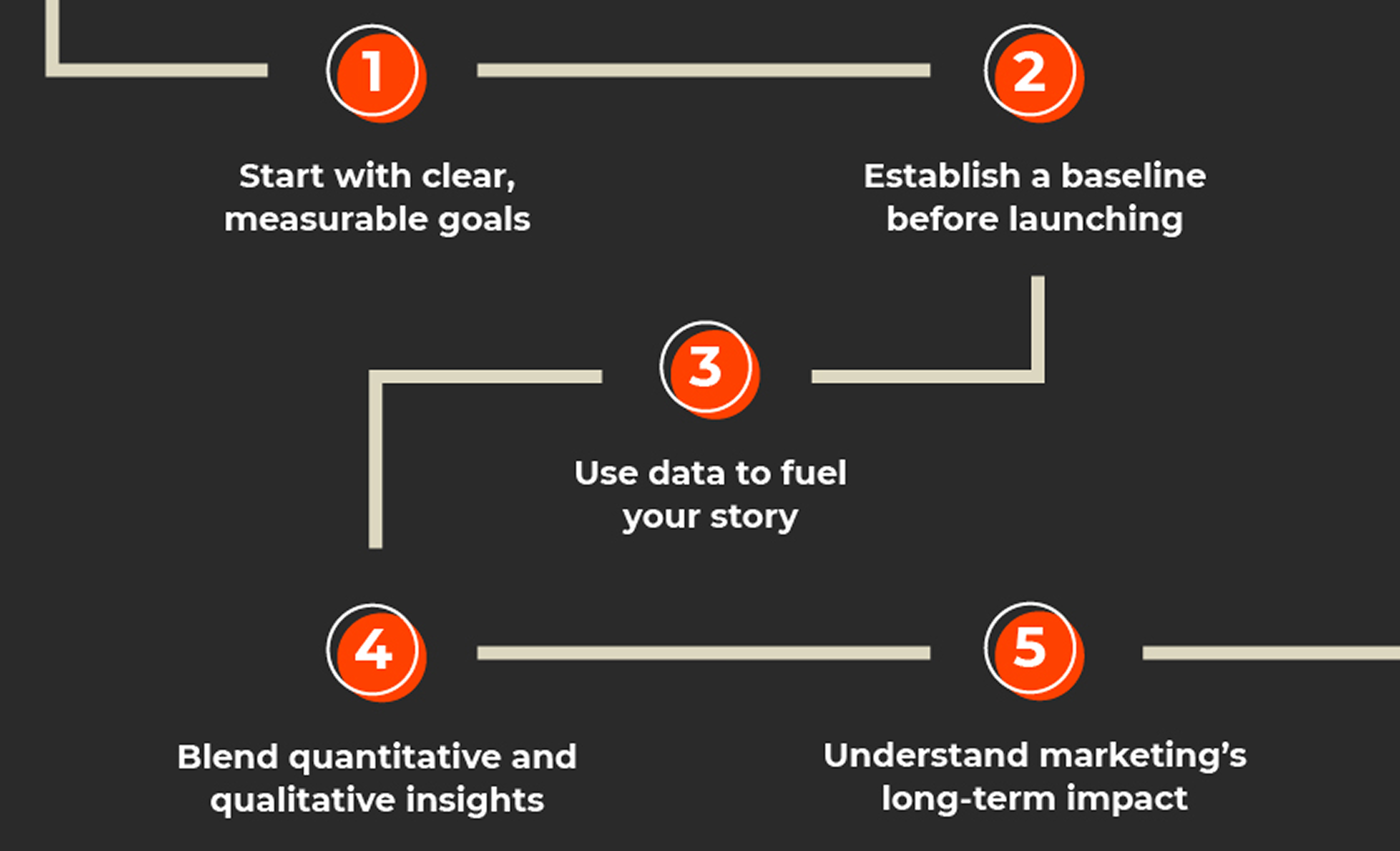Feel like you’re constantly defending your marketing budget?
We get it. Marketing impacts nearly every part of a business, but it’s not always easy to show exactly how. Connecting efforts to measurable results can be tricky, especially when leadership expects a simple equation like X + Y = RESULTS.
The key to getting buy-in? Framing marketing’s value in a way that resonates across leadership, finance, and beyond. Read on for tips to help align your team and get leadership on board.
How to communicate marketing’s impact across your organization
As financial marketers, we know marketing drives business success. But unlike sales, where results are often immediate, marketing influences customer behavior both directly and indirectly, making its impact harder for stakeholders to see.
The solution? Move beyond justifying your work and start framing marketing’s value in a language leadership understands. Here’s how to align teams, shape understanding, and help everyone see the bigger picture:

Step 1: Start with clear, measurable goals
One reason marketing’s impact can feel unclear is that success isn’t always defined in business-centric terms. Executives don’t care about impressions or CTRs, they care about outcomes that drive growth.
Without clear, measurable goals tied to business priorities, marketing can be seen as a series of activities rather than a strategic growth driver. That’s why it’s important to answer questions like:
| Credit card marketing questions to consider | Possible solutions |
| What does success look like? | Look at both standard and promotional APRs to compare how competitors are pricing their products. |
| What are we trying to accomplish? | Encourage cardholders to redeem more rewards points by highlighting the benefits of spending to earn rewards. |
| Why is it important? | Higher rewards program engagement leads to more cardholder spend as they use their cards to earn points, driving more transactions and higher balances. |
| How will we measure it? | Track the number of points redeemed before and after the campaign and compare the total spend by cardholders who engaged with the rewards promotion. |
Whether it’s content marketing ROI, customer acquisition, or brand awareness, clear objectives help you frame your outcomes and align with your leadership expectations.
Step 2: Establish a baseline before launching
If you don’t know where you started, it’s impossible to measure progress. Anchoring results to a specific start point, like conversion rates or customer acquisition cost, gives you a solid reference to demonstrate results.
| Metric | Before campaign | After campaign | % change |
| Conversion rate | 1.3% | 2.5% |
 92% 92%
|
| Cost per acquisition (CPA) | $225 | $180 |
 20% 20%
|
| Revenue generated | $333,500 | $416,500 |
 25% 25%
|
Step 3: Use data to fuel your story
Being a marketer means being a storyteller and a data analyst. Leaders want insights that show how marketing moves the needle — not a flood of charts and numbers. Translate the data into clear, meaningful takeaways that make it easy for decision-makers to understand marketing’s contribution.
| What challenge are cardholders facing? | Is engagement low? Are cardholders redeeming points? |
| What can marketing do to help cardholders? | Consider things like a spend & get email engagement campaign or a personalized point tracking and redeeming dashboard. |
| What was the impact? | Show measurable impact and ROI. |
| After the change, what are cardholders thinking? | If available, include a cardholder testimonial. |
Step 4: Blend quantitative and qualitative insights
Hard numbers are important, but stories add context. Customer testimonials, survey responses, and real-life success stories humanize the data, helping leadership comprehend marketing’s broader impact.
| Solicit testimonials | Consider adding a ratings and reviews section to your card pages and offer additional points for customer feedback. |
| Conduct a survey | Create an email campaign inviting cardholders to participate. As an incentivize, offer participants a statement credit. |
| Find actual cardholder experiences | Search social media card mentions to discover organic cardholder experiences. |
PRO TIP
Social proof is a powerful currency in today’s market. Share customer feedback to amplify your results and build credibility.
Step 5: Understand marketing’s long-term impact
Not every marketing touchpoint leads to an immediate sale. A single campaign might involve multiple channels, like emails, ads, and in-branch materials, all contributing to customer decisions over time.
While quick wins are great, tracking ROI helps capture the full value of sustained marketing efforts on business growth.
Conclusion: shift the conversation from cost to growth
By setting clear goals, establishing baselines, using data effectively, blending insights, and emphasizing long-term impact, you can transform how marketing is perceived.
The more effectively you communicate marketing’s value, showing that it isn’t just an expense, but a key driver of success, the easier it becomes to align teams, gain leadership buy-in, and drive stronger results.
Make sure your organization sees it that way!








